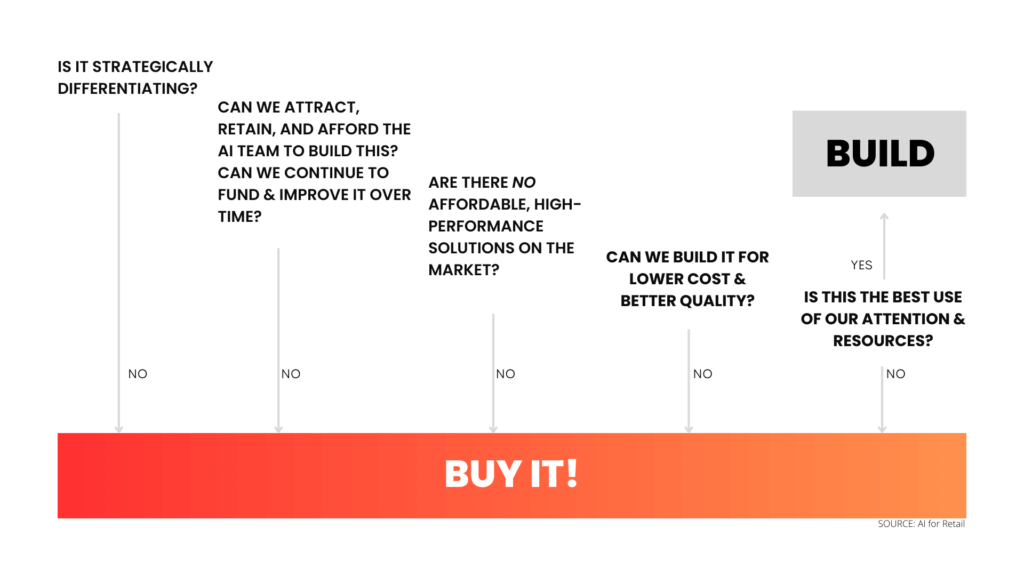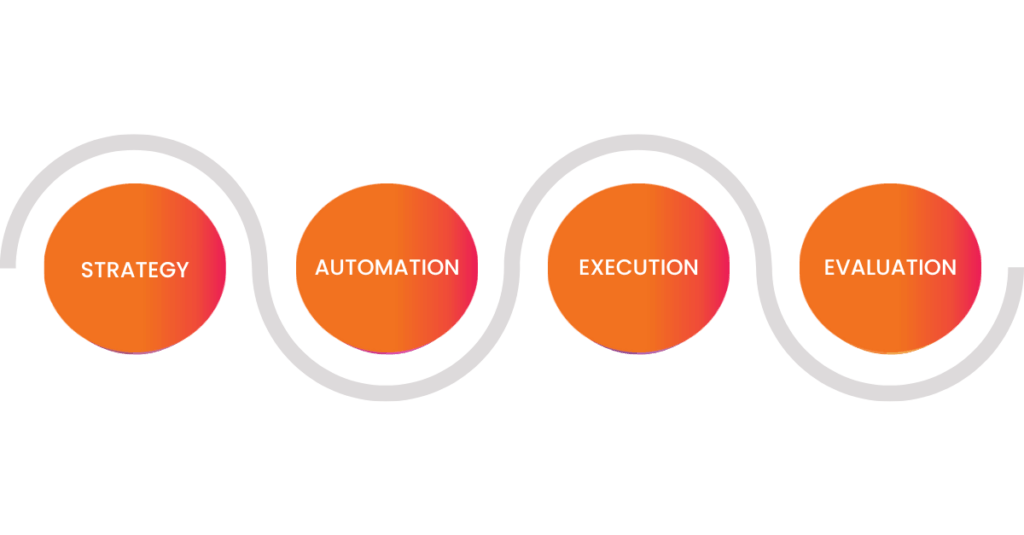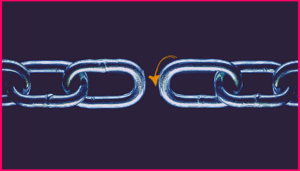Buy vs. Build: Price Optimization Solution
Reading Time: 8 Minutes
In grocery, you face unique challenges when it comes to pricing. Automation can be a game-changer. Here’s why:
It’s a hyper-competitive market. Grocery retailers operate in a competitive market with slim margins. Even small price changes can impact sales and profitability. A platform that automatically collects and monitors competitor pricing is crucial.
You have a complex product mix. Omnichannel grocers carry tens of thousands of products with varying costs, promotion schedules, and price sensitivities. Manually setting prices for each item is inefficient when price automation solutions can recommend optimal prices for each product.
Customer preferences evolve. Beyond price, consumers care about convenience and experience. Private label products, local brands, or ship/pickup/delivery options matter. With automation, you can understand product trends across price zones, then adjust pricing accordingly.
Should I Buy or Build a Price Optimization Solution?
Retail price optimization takes the guesswork out of pricing execution. With the right solution, you can identify the ideal price for each product, ensure it aligns with your business goals, and activate it with a single click.
Profitability is a major reason grocery retailers implement price optimization solutions. Plus, the advanced automation boosts customer satisfaction, optimizes inventory, and keeps you competitive.
The benefits are clear, but that age-old question remains: Should I build a price optimization solution internally? Or, should I implement a price optimization engine from a vendor?
Keep reading to explore the pros and cons of buying a price engine vs. building it yourself. Start by asking yourself these questions:

Buying Price Optimization
PROS
- Time to value: Get started quickly.
- Innovation: Access state-of-the-art retail capabilities built by industry practitioners.
- Support: Reduce risk by relying on the vendor for service and support.
- Focus: Focus on your business and strategy, while your tech partner can focus on the price optimization solution.
CONS
- Customizations: May not have customization available in line with your specific needs.
- Spend: Various costs and fees can feel expensive.
- Product enhancement: Updates, maintenance, and support are in the solution provider’s hands.
Questions to Ask Price Optimization Solution Vendors
👉How can you protect our competitive strategy?
👉How do you ensure data quality?
👉How do we receive information?
👉Can we start with a proof of concept?
We use advanced controls to safeguard your data. Our solution focuses on optimizing and executing YOUR strategy without exposing it to any of our other customers.
We employ automated checks and humans verify processes to maintain data integrity. Our dashboard is intuitive, and users love drilling into the details based on category, sub category, or priority item.

Building a Price Optimization Solution
PROS
- Customizations: Create an engine tailored to your unique business goals.
- Control: Determine solution functionality and development internally.
- Cost: Iinitial costs might be less.
CONS
- Resource heavy: Lots of internal lift – from team meetings, planning, and testing. This is investing time and money.
- Unpredictable: Development pitfalls and unknown risks can lead to costly fixes and performance issues.
- Constant: Incurring high costs to keep your engine performing optimally.
More Considerations:
Artificial Intelligence
Whether you buy or build a pricing solution, AI will play big role. While “AI” can be ambiguous, working with an established provider with true AI expertise and experience gives you advantages when it comes to executing your pricing strategy.
The success of AI hinges on one crucial factor: adoption.
Simply having AI tools isn’t the key. Actively using and integrating them is what unlocks true growth potential.
Integrations
Downstream integrations are a critical component to an effective price optimization solution.
Downstream integrations (think: connections to your electronic shelf labels or website) mean consistency, transparency, and a competitive advantage. You should have the ability to update omnichannel shelves in real-time, eliminate pricing confusion for your customers, and quickly react to market dynamics. Translating the insights from your price optimization solution is one thing… but integrations can provide operational advantages.
Partnership
If you’re choosing a vendor, create a partnership. The vendor should understand your industry plus adapt and evolve the solution alongside your business needs.
The Latest Insights – Straight to Your Inbox
Sign up for the Bungee Tech mailing list for actionable strategies, upcoming events, industry trends, and company news.














